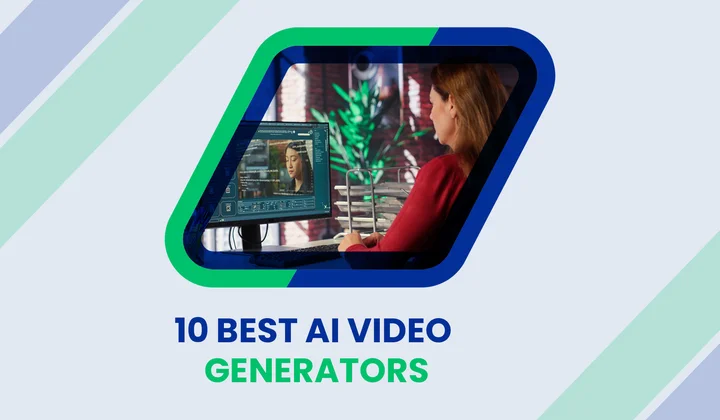Enterprises often feel caught between ambition and reality when adopting AI. Many business leaders imagine a world where AI drives efficiency and innovation, but in practice, pilot projects often stall or don’t scale.
Technical teams often struggle with data issues, while business teams worry about disruption. It creates a gap that slows down transformation. At the same time, ethical risks and legacy systems raise genuine concerns about trust and feasibility.
It is clear that without the right strategy, investment in talent, and built-in governance, AI efforts remain dreams, not business drivers.
A recent IBM study shows that only 42% of large enterprises have actively deployed AI, while 40% are still experimenting, citing barriers like skills gaps, data complexity, and ethical concerns.
In this blog, we will explore the top 10 enterprise AI integration challenges.
So, let’s begin.

Challenge 1: Difficulty in AI Adoption in Enterprises
Many organizations face hurdles when moving AI from pilot projects to real business use. Teams often struggle to align AI with business goals, and gaps between technical and non-technical staff slow progress.
Additionally, the common challenges involve the following:
Table of Contents
- Unclear ownership of AI responsibilities
- Limited understanding of data readiness
- Budget uncertainty
- Scattered priorities
Recent findings reveal that just 24% of enterprises see themselves as data-driven, while only 2% have made data literacy an investment priority. Addressing these challenges early is essential for smooth enterprise AI integration.
Solution: How to Drive Successful AI Adoption?
With clear goals, small high-impact use cases, and shared knowledge spaces, teams can foster better collaboration. Furthermore, short learning sessions and consistent communication reduce resistance. Finally, defining roles and responsibilities ensures AI initiatives move from experimentation to tangible business results.
Challenge 2: Integrating AI into Existing Business Processes
Integrating AI into established business processes can be tricky. Teams often struggle to connect new AI tools to legacy workflows, which can slow progress and create confusion.
Additionally, unclear process mapping and inconsistent data formats make it harder to implement AI solutions effectively.
For instance, departments may follow different procedures, making standardization a challenge.
- Resistance from teams used to existing processes
- Lack of clarity on where AI adds value
- Difficulty in maintaining process efficiency during the transition
Smooth integration is crucial for maximizing the benefits of AI in enterprises.
Solution: Steps to Easily Integrate AI
Successful integration requires careful planning and collaboration. The steps include:
- Map current processes to identify areas where AI can add value
- Involve cross-functional teams early to ensure alignment.
- Test AI solutions on small workflows before wider rollout.
- Maintain clear communication to manage expectations
- Continuously monitor and adjust processes as needed
These steps help organizations embed AI effectively into existing workflows, ensuring both efficiency and adoption across teams.
Challenge 3: Enterprise AI Implementation Hurdles
Implementing AI at an enterprise level comes with several hurdles. Teams often struggle to align AI projects with strategic goals, which can stall progress.
Additionally, unclear workflows and fragmented data make deployment challenging. Integration across departments requires careful coordination, and misalignment can lead to delays.
Major challenges involve the following:
- Lack of standard implementation frameworks
- Inconsistent data quality across departments
- Insufficient collaboration between IT and business teams
- Difficulty managing multiple AI projects simultaneously
Addressing these hurdles early is essential to avoid wasted resources and ensure that AI delivers meaningful business impact.
Solution: Overcoming Common Implementation Issues
Overcoming enterprise AI implementation hurdles requires clear roadmaps and strong collaboration. Incremental rollouts let teams test solutions before scaling, while improving data consistency ensures smoother integration.
Close coordination between IT and business teams makes AI integration in business processes more efficient, helping projects deliver real business value.
Facing roadblocks while scaling AI across your enterprise? Get an AI roadmap designed to help you achieve measurable outcomes within 90 days.
Challenge 4: Data Governance Challenges for AI Projects
AI projects rely heavily on high-quality, well-organized data, yet many enterprises struggle with data governance for AI projects.
Inconsistent data, fragmented storage systems, and unclear ownership often slow AI initiatives.
Additionally, regulatory requirements and compliance standards add extra complexity. Teams may find it difficult to ensure data is accurate, accessible, and secure across multiple departments.
Common obstacles include:
- Scattered or incomplete data sources
- Lack of clear ownership and accountability
- Difficulty maintaining compliance with regulations
Without strong governance, AI solutions risk producing unreliable results and poor decision-making.
Solution: Establishing Strong Data Governance Practices
Implementing clear data ownership, consistent standards, and accessible storage helps overcome data governance challenges for AI projects. Regular audits and cross-team collaboration ensure data quality and compliance, making AI projects more reliable and easier to scale.
Challenge 5: Legacy Systems and AI Compatibility Issues
Many enterprises struggle to integrate AI with outdated or legacy systems. These systems often lack the flexibility needed to address enterprise AI integration challenges, resulting in delays and additional costs.
Additionally, incompatible software, siloed databases, and slow infrastructure make it challenging to deploy AI solutions efficiently. Teams may face technical roadblocks when trying to connect AI tools with existing processes.
Among the main obstacles are:
- Outdated infrastructure not supporting AI workloads
- Fragmented systems across departments
- High cost and effort for system upgrades
Without modernization, AI adoption can remain slow and fragmented, limiting its impact on business outcomes.
Solution: Modernizing Systems for AI Integration
Upgrading infrastructure, consolidating fragmented systems, and adopting scalable platforms enable smoother AI integration in business processes.
Organizations can use legacy software modernization expertise to reduce compatibility issues, enable faster deployments, and ensure AI solutions deliver meaningful results.
Challenge 6: AI Skills Gap in Organisations
Many enterprises struggle to implement AI effectively due to an AI skills gap within their organizations. Teams often lack trained professionals who can manage, deploy, and optimize AI solutions.
Additionally, rapid technological changes make it difficult for existing employees to stay up-to-date. Misalignment between AI goals and available skills can slow projects and limit business impact.
The main obstacles consist of:
- Shortage of AI and machine learning experts
- Lack of internal training programs
- Difficulty attracting skilled talent
Addressing the AI skills gap in organizations is essential to ensure teams can manage and scale AI initiatives successfully.
Solution: Building and Upskilling AI Talent
Investing in training programs, mentorship, and knowledge sharing helps bridge the AI skills gap in organizations. Additionally, hiring specialized talent and encouraging continuous learning ensure teams can manage AI solutions effectively and achieve measurable results.
Challenge 7: AI Ethics and Compliance Concerns in Enterprises
Many enterprises worry about the risks of AI misuse, bias, and a lack of accountability, making AI ethics and compliance a significant challenge. Without clear ethical guardrails, AI systems may make unfair decisions, invade privacy, or operate in an opaque manner.
In addition, rapidly evolving regulations and the absence of internal policies make compliance difficult. Teams might not know who is responsible for ethical oversight or how to enforce accountable practices.
Other common issues are:
- Algorithmic bias and fairness concerns
- Lack of transparency (“black-box” decision-making)
- Unclear accountability for AI-driven decisions
These concerns can erode trust among customers, employees, and regulators, threatening both reputation and long-term adoption of AI.
Solution: Implementing Ethical AI and Compliance Guidelines
Establish a formal AI governance framework to address AI ethics and compliance in enterprises. The Ethisphere AI Governance, Risk & Ethics Compliance Report recommends cross-functional oversight, ethical checkpoints in development, and regular audits.
These steps ensure transparency, fairness, and accountability while building trust and supporting long-term AI adoption.
Challenge 8: Scaling AI Solutions in Large Organisations
Many large enterprises struggle to scale AI beyond pilot projects. Implementing solutions in one department is often manageable, but applying them across multiple units creates technical and operational challenges.
Additionally, inconsistent data standards, siloed teams, and a lack of transparent governance can slow adoption.
Typical obstacles include:
- Difficulty maintaining model performance at scale
- Challenges in aligning AI initiatives across departments
- Lack of robust infrastructure for enterprise-wide deployment
These hurdles make it difficult for large organizations to realize AI’s benefits across all departments fully.
Solution: Strategies to Scale AI Effectively
Standardizing data and processes, building scalable platforms, and ensuring strong collaboration between IT and business units help scale AI successfully.
Using AI solutions and services supports deployment, monitoring, and expansion, making it easier to scale AI solutions in large organizations.
Challenge 9: Change Management and Employee Resistance
Employee hesitation often blocks successful AI adoption. Staff may fear automation, misunderstand AI’s role, or feel unprepared for new workflows.
Other difficulties consist of:
- Lack of training and awareness programs
- Unclear communication from leadership
- Resistance to changes in routine tasks
Overcoming employee resistance is critical to ensure smooth AI integration and achieving project success across the organization.
Solution: Encouraging Adoption Through Training and Communication
Short training sessions, clear communication, and showcasing early AI successes reduce resistance. Structured support and continuous engagement ensure smoother adoption and stronger collaboration for effective AI integration into business processes.
Challenge 10: Measuring ROI and AI Performance Effectively
Many enterprises struggle to measure the success of AI initiatives. Without clear metrics, it’s difficult to determine whether AI delivers business value or just consumes resources.
Among the difficulties are:
- Lack of standardized performance indicators
- Difficulty linking AI outputs to business outcomes
- Unclear reporting and accountability
Solution: Metrics and Frameworks to Track AI Success
Defining KPIs for both technical performance and business outcomes, along with regular reviews, ensures meaningful measurement.
Transparent reporting and structured evaluation frameworks overcome enterprise AI implementation hurdles and help projects deliver tangible results.
Frequently Asked Questions (FAQs)
2. How Can Organizations Ensure Successful AI Adoption Across Teams?
Success comes from setting clear objectives, improving data readiness, offering focused internal training, and communicating changes early. Strong collaboration between business and technical teams reduces resistance and supports smoother adoption.
3. Why Do AI Projects Fail to Scale in Large Enterprises?
Scaling becomes difficult when departments use different data standards, teams work in silos, or infrastructure isn’t built for enterprise-wide deployment. Standardization, scalable platforms, and strong governance are essential for effective scaling.
4. How Can Enterprises Measure the ROI of AI Initiatives Effectively?
Effective AI ROI measurement includes:
- Defining both technical KPIs (accuracy, model performance)
- Tracking business KPIs (efficiency gains, cost savings, revenue impact)
- Reviewing outcomes regularly to ensure alignment with business goals
- Using transparent reporting and structured evaluation frameworks
Conclusion: How Enterprises Can Successfully Implement and Scale AI
Enterprises face multiple challenges when integrating AI, including adoption hurdles, skills gaps, and ethical concerns. What becomes clear is that success depends on combining strategic planning, strong governance, and effective team collaboration.
Additionally, ensuring ethical compliance and scaling initiatives thoughtfully allows AI to deliver tangible business value while maintaining stakeholder trust.
Organizations can achieve better outcomes through AI development services for structured guidance and support. It is through the right combination of tools, talent, and processes that they improve operational efficiency and fully realize the potential of AI across their business operations.
Final Takeaway: Enterprises that focus on strategic planning, upskilling talent, and ethical AI practices can successfully integrate and scale AI, turning challenges into measurable business impact.
Partner with our AI specialists to overcome AI challenges and strategize, implement, and scale AI across your enterprise.








Share your thoughts about this blog!